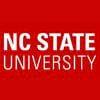Explore all the information on
Feed formulation
Welcome to the page about Feed formulation of Engormix; a source of knowledge on Feed formulation.
1. Introduction The gastrointestinal tract is a dynamic and complex environment that requires a correlation between the gut microbiota and the host for good functionality [1–3]. The composition of the gut microbiota changes throughout the life of the animal or due to various factors like the environment, behavior, and diets [4]. Studies indicate a strong correlation between intestinal diseases and the constitution of the microbiota [1,2]. A healthy gut is an essential...
Comments : 0
Recommendations: 0
I am developing an AI for bovine nutrition and I am looking for 3 people in the field to test it with real diets. It's free and I just want feedback. If you are interested in participating ? fill out the form here ?? https://forms.gle/HrovSfNEBZABzkhh9...
Comments : 0
Recommendations: 0
Recommended events
January 26, 2026
United States - Georgia - Atlanta
Respiratory diseases hurt swine operations on both the input and output side of the equation: feed costs rise as performance plummets. New research suggests that by using soybean meal, you can mitigate these challenges as a cost-effective tool for maintaining pig health and performance during outbreaks. Respiratory Diseases Present Challenges When pigs are infected with respiratory diseases such as swine respiratory disease (SRD) and porcine...
Comments : 1
Recommendations: 0
Michael Joseph, Assistant Professor & Extension Specialist at NC State University, discusses the potential and caveats of using alternative protein sources in animal production during this Engormix interview. ...
Comments : 0
Recommendations: 0
Michael Joseph, Assistant Professor & Extension Specialist at NC State University, explains how the food and feed industries are producing more with less, finding strategies to become more adaptable and efficient, in this Engormix interview. ...
Comments : 0
Recommendations: 0
Introduction Precision nutrition means diets are formulated as close as possible to requirements while avoiding any deficiency issues. Benefits of precision mineral nutrition can include reduced diet costs, reduced environmental impact, and reduced risk of toxicity. The major problem with precision mineral nutrition is increased risk of deficiency. Deficiency can be manifested as a clinical deficiency (e.g., grass tetany caused by inadequate magnesium), or as numerous subclinical...
Comments : 2
Recommendations: 3
Mohammad Afrouziyeh (University of Alberta) discusses Least Cost Feed formulation and Maximum Profit Feed formulation models, as well as the application of mathematical Linear Programming and Non Linear Programming models that are used in animal nutrition....
Comments : 19
Recommendations: 18
I. INTRODUCTION The laying hen has a considerable requirement for dietary calcium (Ca) and phosphorus (P) to support optimum egg production, egg quality and other physiological processes. In particular, a high intake of Ca ranging from 4 to 4.5% of the diet is considered important as the laying cycle progresses from early to late lay to achieve optimum egg number and egg shell quality. A capacity for birds to increase Ca intake from a separate Ca source as dietary Ca levels diminish...
Comments : 0
Recommendations: 0
A. ANIMAL FACTORS
B. PLANT FACTORS
C. PREPARATION OF FEED
A. ANIMAL FACTORS
1. Species
Roughages high in crude fibre are better digested by ruminants than by non-ruminants due to the pre-gastric fermentative digestion that occurs in the ruminants.
In several...
Comments : 11
Recommendations: 8
I. INTRODUCTION Necrotic enteritis (NE) is of great concern to the poultry industry due to its deteriorating impact on production and increasing mortality, resulting in a US$6 billion global economic loss (Wade and Keyburn, 2015). The causative agent of NE is Clostridium perfringens, a gram-positive spore-forming anaerobic bacterium. The subclinical form of NE is financially more devastating than the clinical form. This is due to a lack of obvious symptoms resulting in a delayed...
Comments : 0
Recommendations: 0
I. INTRODUCTION Protease enzymes can improve the dietary protein utilization. Therefore, it is possible to decrease the level of dietary protein to save on feed cost while maintaining performance, reduce nitrogen excretion in the environment, and minimize the risk of enteric infections. The objective of this study was to evaluate the effect of a protease on performance and intestinal health of broiler chickens fed a standard diet or a low-density diet. II. MATERIALS AND...
Comments : 0
Recommendations: 0
I. INTRODUCTION Microbial enzymes are now routinely used in broiler chicken diets to reduce the effects of antinutritive factors (ANF) in feed and/or improve the digestion of nutrients (Bedford, 2011). There is a suite of enzymes that target ANF such as non-starch polysaccharides (NSP) and phytic acid as well as products which improve the digestion of nutrients such as protein and minerals. The major cereals used in poultry diets are wheat, maize, sorghum and barley. The objective of...
Comments : 0
Recommendations: 0
I. INTRODUCTION Low-protein diets for broiler chickens axiomatically contain high inclusions of supplemental amino acids and have the potential to generate economic, environmental and bird welfare advantages. Low-protein diets are usually formulated by reducing soybean meal inclusions and increasing inclusions of a range of supplemental amino acids. An alternative approach was adopted in the present study where dietary protein levels were reduced by the partial replacement of maize...
Comments : 0
Recommendations: 0
1. Introduction Intestinal health is a crucial parameter in ensuring the health of birds and the optimal use of nutrients because of its various functions, namely the digestion and absorption of nutrients, the secretion of mucins and immunoglobulins, and selective protection against pathogens [1]. This topic has gained even more interest in poultry production because of increasing demands for economic efficiency, animal welfare, food safety, reducing environmental impact, and...
Comments : 0
Recommendations: 1
INTRODUCTION Rabbits (Oryctolagus cuniculus) can receive high amounts of fibrous material in their diets, from 24.5% to 44.3% of neutral detergent insoluble fiber (NDF), so that they can take advantage of energy, protein, and vitamins from fermentative processes carried out by microorganisms in the cecum and the rest of the large intestine. This is how they manage to digest or ferment from 3% to 70% of the NDF, 0% to 82% of the hemicellulose, and 1% to 59% of the cellulose (De Blas...
Comments : 0
Recommendations: 0
1. Introduction Recent trends in food animal production emphasize reducing antibiotic use due to the growing threat of antimicrobial-resistant bacteria [1,2]. Consequently, there is a critical need for sustainable alternatives that promote growth and health while maintaining production efficiency. Phytobiotics are plant-derived compounds that have emerged as promising candidates for this role [3]. Unlike antibiotics, phytobiotics do not contribute to antimicrobial resistance or...
Comments : 0
Recommendations: 1
1. Introduction Weaning is recognized as a highly stressful period for young pigs, during which they experience maternal separation, new social and dietary conditions, and critical physiological changes. These stressors, often compounded by suboptimal sanitary conditions on farms, can lead to severe outbreaks of diarrhea, typically linked to the proliferation of specific pathogens. The most commonly implicated bacterial pathogen is Escherichia coli [1]. However, once dysbiosis and...
Comments : 1
Recommendations: 0
I. INTRODUCTION Modern broilers grow 5 times faster on 40% less feed than they did 60 years ago (Zuidhof et al., 2014). Because high body weight (BW) correlates negatively with reproduction and health (Decuypere et al., 2010), the severity of broiler breeder feed restriction increases every year relative to broiler growth potential. This intensifies competition for feed, resulting in unequal distribution of feed and poor flock uniformity. Achieving and maintaining high flock...
Comments : 0
Recommendations: 0
While the breeding programs of commercial meat chickens select birds with robust legs (Davis, 2015), poor leg strength and reduced locomotion are frequently observed in late stages of growth. We have previously reported that lower egg shell temperatures during early incubation, which delays chick hatch time, increases bone ash (BA) (Muir and Groves, 2017). Observations from our research and the literature (e.g. Ulmer-Franco et al., 2010) suggest that maternal breeder flock age may influence...
Comments : 0
Recommendations: 0
Growth promoting effects of zinc bacitracin, Bacillus-based probiotics and a blend of Yucca and Quillaja saponin in broilers have been well documented (Engberg et al. 2000; Cheeke, 2009; Jeong and Kim, 2014). These in-feed additives are commonly used in broiler diets but their effects at different dietary crude protein (CP) concentrations remain unclear. This study was conducted to study the effect of these additives when added to low and high-protein diets on performance and caecal...
Comments : 0
Recommendations: 0









.jpg&w=3840&q=75)




.jpg&w=3840&q=75)












